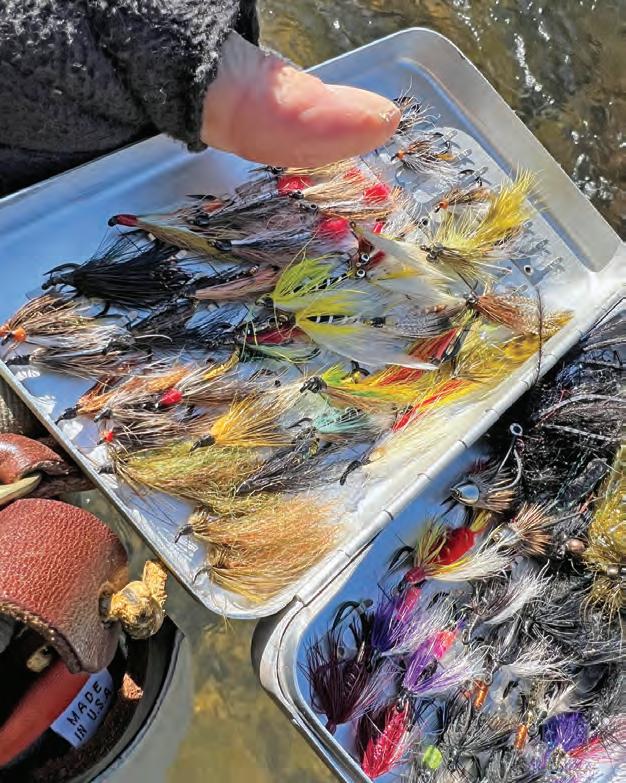
1 minute read
JOIN THE TROUT SPEY REVOLUTION
By David Hulsey
Asingle-handed fly rod, which you might refer to as a “normal” fly rod, is the tool of choice for most anglers seeking trout or other species on our inland rivers. But I’m here to tell you there’s a revolution building steam. Don’t be surprised when someone on your local river shows up wielding a twohanded spey rod. These long rods are gaining popularity because they offer certain advantages.
For centuries, two-handed spey gear has been used only in pursuit of big anadromous fish such as salmon or steelhead on the huge coastal rivers of many continents. However, in the last decade or so, micro or trout spey rods have found their way into the hands of anglers. This smaller troutsized spey gear opens the door for fishing areas and for species that inhabit some of our beloved rivers and mediumsized streams.
If it lives in moving water, it can be caught with spey gear. Trout, of course, are the main quarry, but other fish such as smallmouth, spotted bass, largemouth, white bass and stripers are also fair game. Smallersized spey rods in 4-, 3-, or even 2-weight sizes are extremely effective tools for reaching fish in big water with dicey wading areas.
Besides being loads of fun to fish and cast, a spey rod is designed to launch flies into the next county with little or no back-cast room available. Most trout-sized spey rods are less than 12 feet long, with longer rods up to 16 feet reserved for big steelhead or salmon. A 2-weight spey rod is similar to casting a 4or 5-weight single-hand fly rod. A 3-weight spey rod can handle flies in sizes that a 5- or 6-weight single-hand can cast, and so on.
Here’s the main advantage of two-handed gear: Easy casts of 70 or more feet can be launched from positions that are impossible with a single-hand fly rod. Right now, the wheels in your head should be turning about places on your home river you have always wanted to run a fly through but couldn’t reach.
Fishing is done down and across current to carefully swing flies through likely runs or holes, and the angler waits for the electric jolt of a trout or bass. Flies imitating baitfish, emerging insects, and even brightly colored Atlantic salmon or steelhead flies in smaller sizes are readily taken by fish. A well-tied fly sweeping in front of a predator can draw a hunger reaction or a reflex strike in almost any condition.
Casting and fishing micro spey gear is extremely fun and effective. I hope you will join the trout spey revolution!
David Hulsey is a north Georgia guide who also teaches spey and regular fly fishing classes. Contact him through his website at www.hulseyflyfishing.com.








